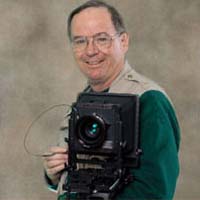


Member, Freestyle Advisory Board of Photographic Professionals
Stan McQueen's career as a photographer began when he developed his first roll of film in his bathroom darkroom at the age of 12. He succeeded in various kinds of photography, including portraiture, but his love of the outdoors-- "lonely places" in his words-has been the inspiration for most of his award winning photographs. Stan works in both color and black and white. Much of his best work has been done in Infrared because that medium provides that extra haunting effect. Stan is especially adept at infrared because of his graduate school work at the Air Force Institute of Technology, where his graduate thesis was on the physics of Infrared light. Although most of his work is work is film based, the Digital Age has not passed him by. He scans many of his negatives and prints them out on an inkjet printer. His work has been shown at various museums and photographic venues throughout the West and Midwest, including the Utah Museum of Art.